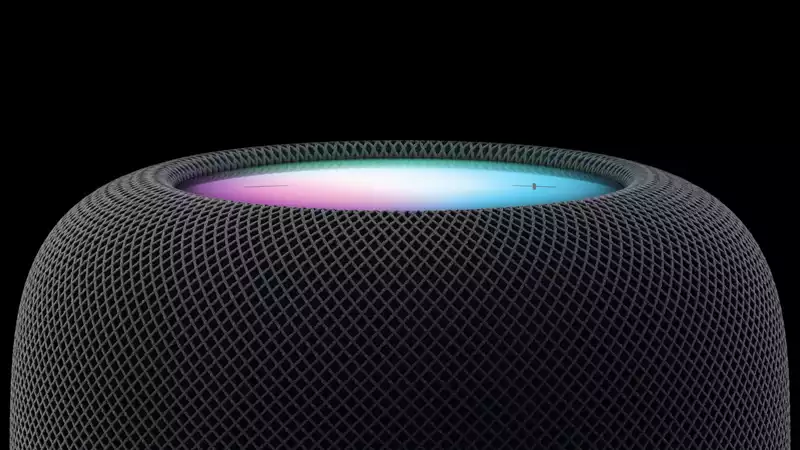Apple's big smart speaker is back. Announced in a press release (opens in new tab), the new HomePod (2nd generation) has several upgrades over the original and could be the smartest Siri speaker yet.
Apple appears to have discontinued the original HomePod in favor of the smaller, less expensive HomePod mini. However, the sleek design, added environmental sensors, and promise of advanced computational audio make this surprise an exciting one for the future of HomeKit.
At $299, the HomePod 2 is still considerably more expensive than many of the better smart speakers offered by Amazon and Google. However, the new features of the HomePod (2nd generation) may make it the intelligent home audio product that Apple users have been waiting for.
HomePod (2nd generation) will be available soon. Here is what we can expect to learn about pricing, availability, design, performance, etc.
Update (January 31): a review of the Apple HomePod (2nd generation) is now available.
The new HomePod 2 will be priced at $299 and will be available starting January 18, with a full launch on February 3.
Comparing the price of the second-generation HomePod to the debut price of the original HomePod, the new version is actually more affordable; HomePod first launched in 2018 for $349, but the cost dropped to $299 in 2019.
With the launch of the new HomePod, the HomePod mini remains Apple's most accessible smart speaker at $99.
Apple is also likely to release a smart display, but not for a while.
HomePod 2 is unmistakably an Apple speaker, as it looks like a hybrid of the original HomePod and HomePod mini; it retains the cylindrical 360-degree fabric-covered design and comes in black or white (for now, either will be interesting to see if it comes in colorful finishes like the HomePod mini).
At the top of the new HomePod is a translucent touch panel that can be used to control music playback and activate Siri; when Siri is activated, the panel should produce a light show, similar to the HomePod mini. The original HomePod also had a circular touch panel, but it was black and white.
When we reviewed the original HomePod, we were impressed with its audio performance. Since then, Apple has introduced spatial audio and other computational audio features, and the new HomePod shows off the power of the S7 chip.
For example, the new HomePod can recognize sound reflections from the room in which it is placed and automatically adapt its sound profile. Yes, this is similar to the Sonos One's tuning feature; whether the five tweeters will succeed in creating a tuned, immersive listening experience remains to be seen in testing.
Nevertheless, two HomePods can be paired for stereo sound, in which case the left and right channels are separated to provide a wider sound field. Apple suggests taking advantage of HomePod's ability to pair with Apple TV 4K via eARC and using the two together instead of a soundbar, a setup that seems logical given that HomePod can be used to control Apple TV hands-free. This setup seems to make sense, given that the HomePod can be used to control the Apple TV hands-free.
Otherwise, audio playback can be moved between the iPhone and HomePod via Ultra Wideband technology. Songs, podcasts, and phone calls all support handoff. We particularly liked this feature on the HomePod mini and are optimistic that it will work well on the new HomePod.
Some of the biggest upgrades in HomePod 2 improve the speaker's smart home capabilities. For example, it borrows some features from the Alexa speaker, such as a version of Alexa Guard that can alert users when smoke alarms or other alerts go off in the house. It also has built-in temperature and humidity sensors that can trigger smart home routines. Again, these are conveniences that the Echo speaker has already mastered, but it is good to see Apple catching up.
Smart home routines and scenes compatible with HomePod can be managed through the HomeKit app, which is a HomeKit smart home device, from security cameras and smart thermostats to smart locks, smart lights, and more. destinations to navigate. Of course, you can also have Siri control these devices as long as HomePod is within range.
For customers who are serious about their smart homes, HomePod has an important specification: Matter compatibility; HomePod can control any certified Matter device, even if those devices are not natively compatible with HomeKit. HomePod can control any certified Matter device, even if those devices are not natively compatible with HomeKit. Interoperability has been a disadvantage for HomeKit, but thanks to Matter, the walled garden has been removed.
A full review of the new HomePod 2 needs to be conducted before conclusions can be drawn, but the smart speaker upgrade is definitely intriguing, due to Matter's growing influence and the continued expansion of the smart home market (which shows no signs of slowing down), it makes sense that Apple would want to throw a new hat into the ring.
If it can combine the smarts of Amazon and Google's speakers with the sound quality of Sonos' speakers, the Apple HomePod (2nd generation) could be one of the most exciting smart home devices of the year.
.









Comments